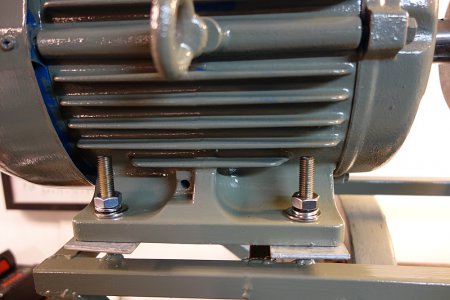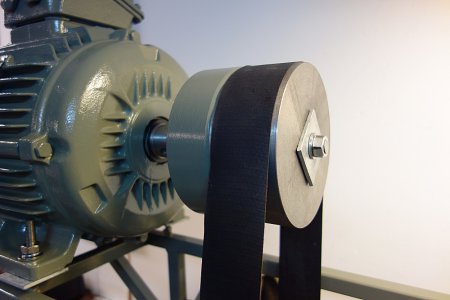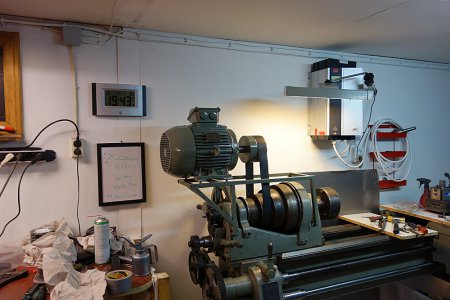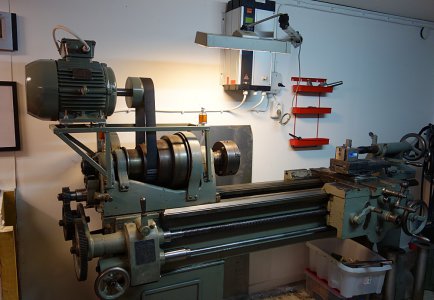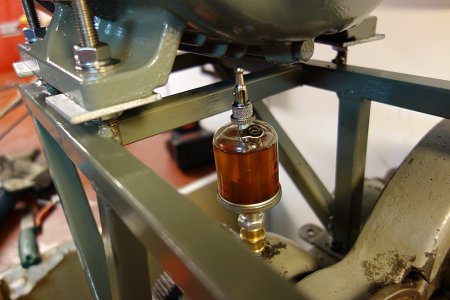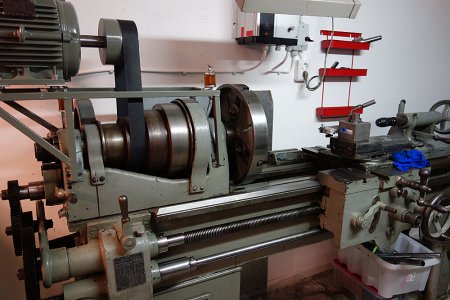-
Welcome back Guest! Did you know you can mentor other members here at H-M? If not, please check out our Relaunch of Hobby Machinist Mentoring Program!
- Forums
- GENERAL TYPES OF METALWORKING MACHINES
- ANTIQUE & VINTAGE MACHINERY
- MISC ANTIQUE & VINTAGE MACHINERY
You are using an out of date browser. It may not display this or other websites correctly.
You should upgrade or use an alternative browser.
You should upgrade or use an alternative browser.
Micke's Vintage Munktell Lathe
- Thread starter Micke S
- Start date
- Joined
- Oct 9, 2014
- Messages
- 465
- Joined
- Oct 9, 2014
- Messages
- 465
Last edited:
- Joined
- Feb 2, 2013
- Messages
- 3,963
very nice work Micke!
you should be very proud of yourself!

you should be very proud of yourself!
- Joined
- Oct 9, 2014
- Messages
- 465
Thank You Mike for the encouraging words. Yes maybe I could at least be a little proud even though I've been struggling a lot. I have saved a fine old machine without destroying it and the long waited for reorganizing of the garage is now done. The only modification on the lathe is eight 6 mm threaded holes for the motor stand, which could be filled if needed. But I'm surprised how many mistakes I've been doing in this project. This is fine since it gives worth-full experiences and it will be easier to avoid traps in the future.
- Joined
- Feb 2, 2013
- Messages
- 3,963
the struggle makes the end result well worth the anguish, my friend.
- Joined
- Oct 9, 2014
- Messages
- 465
First live test by flattening the inside of and old frying pan. The pan has never been used since it has had a major casting error with a 1 1/2" wide 1 mm deep ditch inside the side wall. The pan became absolutely flat and with a very fine finish. The moiré pattern is not caused by the lathe but after a final touch with 180 grit paper where the paper was not moved in a stable matter by hand. It is not something that can be felt though. I was surprised that it was such easy work and that the result became so good.
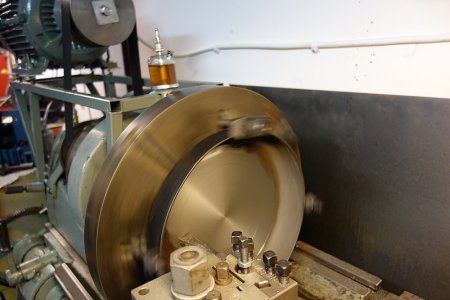
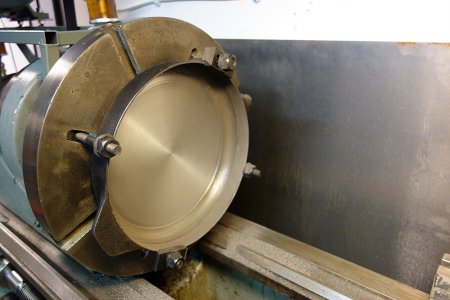
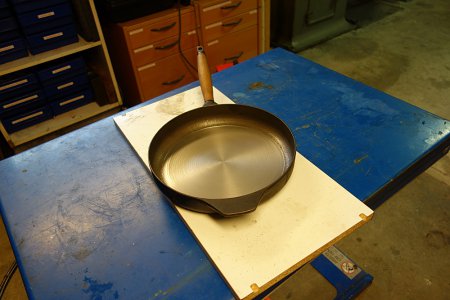



- Joined
- Sep 28, 2013
- Messages
- 4,395
nothing like having a lathe big enough to surface frying pans 
- Joined
- Aug 12, 2014
- Messages
- 269
Micke,
You'll have to season that pan again. I use lard for mine,
John.
You'll have to season that pan again. I use lard for mine,
John.

